Studio 1 Part 01: History of Studio 1
Production I.G is now a structure with nine animation studios, one background studio, one CG room, one game development section and a detached studio in Niigata. What it is now called Studio 1 used to be the one and only animation production room in the early days of Production I.G (then IG Tatsunoko). The key figure of Studio 1, then as now, is animator Takayuki Goto. As you may have thought, the letter "G" of Production I.G stands for Goto's "G", as he's been a core member of the company since its establishment. (The "I" is President Ishikawa's initial). When Production I.G was created, there was just one one room that was called "Animation". Eventually, as the number of staff increased, there wasn't enough space in the room. So it was decided to split the staff into two groups: Studio 1 and Studio 2. This was when Studio 1 was created. By the way, Kazuchika Kise was the key figure in Studio 2.
"I think it was Ishikawa's idea to have a key person in each studio and let the two studios compete. And Kise, who joined I.G later, seemed to be the right person, so Ishikawa asked Kise to head the second studio," says Goto, one of the few people who know of the beginnings of the company. It is not as though each studio works on parts of the same project, nor is it the case where each studio works on entirely separate projects. No specific quality of animation skill (action-oriented or heartwarming) is associated with either of the studios. Therefore, it could be said that the difference between the studios is the really difference between the management styles of the two key figures, Goto and Kise.
For instance, Goto is a typical morning person who arrives at the studio regularly at 10:30 am and leaves at around 10:30 p.m., whereas Kise is a night person. Therefore, many of the staff in Studio 1 are early risers. But Goto feels many people in Studio 2 are more unique. "This might be due to the difference in criteria for picking our staff. For me, of course the skill comes first, but I'd look for team players among other traits that I feel would be useful in animators." But according to Goto, his primary concern is not whom he selects, but how he would train the staff.
"I feel responsible for the rookies I chose and I think it's important how you guide these people. So I make a point in giving young people a chance to participate in a project. And you know, an animator will get better if he or she stays in the business long enough. Unfortunately, many quit before reaching that stage. So I try to make our workplace environment comfortable enough so that people will want to stay as long as they can."
When offered to join Ishikawa to start I.G, Goto accepted hoping that "the company would become an enterprise that would return the profits to the animators." So when the company started to turn a profit, he proposed ways of creating a better working environment for the animator. These included small things, though important to the animators, such as starting a proper pencil supplies system.
"Since Ishikawa was working hard externally as a producer, I thought it was my task to train animators. I feel I have fulfilled my task since some of them have become animation supervisors. If they could train the next generation of animators, then I.G will be fine."
It might be partly due to Goto's policy that the retention rate of the staff at Studio 1 is higher than at other studios. And it seems that his warm personality is reflected in the calm and self-assuring atmosphere of Studio 1. It seems to be a comfortable place to work.
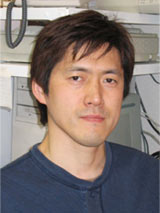
Takayuki Goto


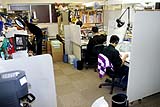
Studio 1 Part 02: Working in Studio 1
Currently, there are 21 animators, 2 sequence directors and one production manager in Studio 1. Among the animators, 8 are key animators and 13 are inbetweeners. Five out of 13 inbetweeners are rookies; they are overseen one-on-one by five key animators, including Goto. "Actually, the method of inbetweening is evolving each year, so it might be better for experienced inbetweeners to look after these rookies. But to teach is a different thing; one needs to be generous and open minded to some extent. I mean, this will take up your time and you will be sacrificing some of your workload. So I thought it would be better for experienced key animators to take care of the rookies instead."
As for the inbetweens, there is an inbetween production department, which manages inbetweens for the entire house. They send over inbetween projects to each studio's inbetween managers (Reiko Sakai for Studio 1). Then Sakai will distribute work among the inbetweeners in the studio.
As for the key frame animation, all of the staff at Studio 1 discusses which project to tackle among the ongoing projects at I.G. Once they know which project they want, the production manager talks to each key animator to see how many frames they can handle. This amount is up to each animator to decide by him or herself.
"Studio 1 feels strongly that we all work on the same anime together. We all seem to think that that's one way of improving ourselves," says Studio 1 chief Takayuki Goto. When they work on the same project, they can visibly compare the pace and the quality of their work with each other, because they are sitting quite close to each other. That is a really good incentive to get better. And by working on one anime together as a team, they can guarantee the quality of their work to some extent. They really aim for a high level of accomplishment. This raises the professionalism of Studio 1 staff.
"Also, feature films and games require very high quality work that could only be handled by experienced key animators, and are not appropriate for training rookies. Whereas for the TV series, there are frames that we can leave up to the new key animators. If there is an animation supervisor among us, then he or she can oversee the new key animators. And also for the TV series, key frames for one episode must be completed within 2 to 3 weeks, so you get trained to work faster and you can also see your own frames on screen sooner. So when we were mainly working on feature films, we would seek TV series projects from other companies in order to train young people. Now that the key animators at Studio 1 are getting experienced, I don't think I have to be the animation supervisor every time we work on an anime. If the young people can handle it, then that's better. It's always a concern for me to see how each one of us can find a place to thrive in I.G and see how that could be done. For me, it's important that the staff stay with us. Creators are all selfish in a positive way and each one of them has his or her dream. Rather than me saying do this or do that to them, if we can participate and share the vision to do this or do that, then I think we can definitely share the feeling that we are building our company together," says Goto.
In 2004, Takayuki Goto and Kyoji Asano were working as animation supervisors for Ghost in the Shell: S.A.C. 2nd Gig; Toru Okubo and Toshiyuki Yahagi for Otogi Zoshi; and Yasutaka Kubota for Windy Tales all at the same time. They found a way to go in separate ways and still do their best, but it was expressed that the front-line staff truly wished to work together on one project if this was possible.

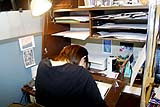

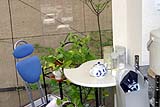
Studio 2 Part 01: Kazuchika Kise and the birth of Studio 2
Kazuchika Kise, who was a key animator at an animation studio in Osaka, met Mitsuhisa Ishikawa, at the time a production staff member at Tatsunoko Production, for the first time when they both worked in the production of the TV anime Future Police Urashiman (1983). Later, Kise made his debut as animation supervisor for another TV series, Red Photon Zillion (1987), produced at Tatsunoko Production Branch, which later became I.G. This led to his joining the production, as an animation supervisor, of the feature film Patlabor: The Movie, released in 1989. "No one thought Patlabor would be a success, so I was planning to return to Osaka after that production." Nevertheless, to everyone's surprise, it turned out to the contrary and Kise was to stay at I.G. Gradually, the staff grew in number, and they needed more space, so they decided to divide the studio into two. This was the beginning of the Studio 2. "We worked on separate projects ranging in various length of time. Takayuki Goto led Studio 1. And we at Studio 2 did mostly theatrical features. That's how it was split up," says Kise, looking back at the time when Studio 2 was founded.
"My everyday life was sort of screwed up at the time. And Ishikawa said, 'I am going to give you an allowance, so join us as one of the founding board members of our new company, because we need four people to make up the board.' It might be that he was thinking about my future. But when I got my new business card as a board member, it did actually say, 'To be supervised by the board' on the back of the card!" jokes Kise.
His easy-going manner might be the reason for what distinguishes Studio 2. Even within I.G, which has become more established in terms of company organization, Studio 2 still keeps the essence of a typical free and open anime studio. People most often attribute this to the uniqueness of the staff in Studio 2 as compared to Studio 1. When it comes to hiring new staff, Kise says, "I take him/her out and have a drink together to see whether we've got an interesting kid."
"Basically, my method is to let them do whatever they want to do, so we don't necessary work together. Each one of us has to do the selling to get one's own work. I don't look after them, but I like watching people, that's all," says Kise. No one will be controlled, so one has to manage his/her own time and take responsibility. In Studio 2, people may have the freedom, but also need to take responsibility at the same time. Kise said he no longer trained new staff. The younger staff now takes care of that.
"I used to instruct people before, but I am not good at teaching. I would show them the sample answer and say, 'This is the way to do it,' but I can't really give the reason for it. It might be because I draw as my intuition tells me, not reason. Those people who left I.G to explore other opportunities sometimes tell me, 'Now, after three years, I think I understand what you meant.' It is really hard to teach how to draw. Now when I yell, 'You're fired! Get out!' my staff would reply, 'I see, then shall I take your desk to the roof top for you?' No one takes me seriously," (lol) says Kise, as he cheerfully talks about conversations among his staff at Studio 2. His cheerfulness seems to represent the spirit of Studio 2.
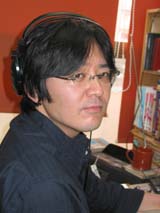
Kazuchika Kise
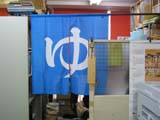
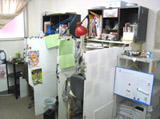
Studio 2 Part 02: Of Cats, Dogs and Sake
Kise works at his desk surrounded by heaps of reference material. In the bookshelves, there are various photo books: titles include, Tokyo Trial, Animals, and another one I can't mention the exact title here.
Q: Do you use all these for your work?
Huh? That's my private collection.
You must be kidding. Ah-hah, you have "Chonmaru Book" (Korean conversation textbook.)
I bought it after I went to Korea to work at Sunwoo Entertainment for Van Helsing Animated. This was supposed to be a two-week assignment, but it took longer than expected and I stayed for two months. I used to converse with a dictionary in my hand and I kept on saying "Opsoyo! Opsoyo! (i.e. it's not in the dictionary.)" Korean animators used to take me out for drinks. Almost every night. And all I could say was "Opsoyo!" "Opsoyo!" You know, you can communicate even by just repeating what others say. Gradually, to my translator's surprise, I found myself figuring out most of what they were talking about by sensing the nuance.
I'm not surprised. You are renowned for knowing most of the heavy drinkers in the Kokubunji area.
When I'm drunk, I would go about and totally put down the person I am drinking with. But I don't like fighting, so I would cover up my earlier comments by finishing off with "But I like you as you are..."
That's funny! By the way, how did you like Korea?
The animation industry in Korea is far more business-like than in Japan. I told all about this to Eiji Mizutani from the 3D team, who joined me in Korea afterward. He got upset and said, "Don't ruin my land of dreams!" Hah, ha-ha.
I've heard you've known Mr. Ishikawa for a long time. What was he like way back then?
He hasn't changed a bit. Ages ago, his family started to take English conversation lessons. Once he said, "You should take lessons too!" and gave me some lesson vouchers for a language school. I went to perhaps two classes, then quit. Ishikawa and his family were successful students. (tearful) Maybe he was already foreseeing the necessity of English for business.
You are called a board member "to be supervised by the board".
Ishikawa comes to me with questions such as "What do you think of this project?" You know, I might have a good nose for new projects. (Note 1) I remember suggesting we should do the feature film Neon Genesis Evangelion: Death and Rebirth. I ended up being the animation supervisor for that film (lol). I don't think I'm good at predicting things about myself.
What do you think of anime today?
I think the scripts are weak. (Note 2) It might be that the current anime production environment makes it hard to train good scriptwriters. This might be due to the fact that many kids who want to be writers tend to go into live-action films. I only see scripts after they are made into storyboards, but I do realize the importance of a good text.
By the way, people say, "Director Oshii loves dogs" and "Kise-san loves cats."
Yep, I picked up a stray cat and kept it in our Studio 2 while I was working on Innocence, because I didn't have time to go home.
You mean a cat in the studio?
One day, Oshii-san came to our studio. He picked up the cat and started talking, "You are such a cute pussy!" When I asked if he had anything to discuss with me, he simply replied, "Nope!" He sure sounded like he didn't care for me. (lol) Right now, I'm away from home most of the time, so the cat is like a stray in my house. When I'm home, the cat gets frightened and hides under the desk. I tell the cat, I'm the master!
What is it like to be in Studio 2?
Most of the staff are girls now. It's like the Shogun's inner quarters. I might get out and start "Studio 2 +" (lol) somewhere, perhaps in a storage room. "Oops, you found me!" Sort of like playing hide and seek, you know.
There are lots of reports such as spotting Kise sleeping on the floor with his feet stretched out under the desk in the morning. Studio 2 is like a collective of individuals rather than a structured organization.
One can't help crediting Kise's love for sake, people and cats for holding these individuals together.
Notes by Kise
Note 1: I think this was the only time I did make a good bet.
Note 2: Those who can't write are the ones...
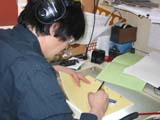

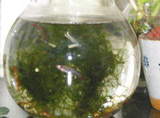
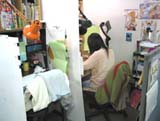
Niigata Studio
"Come home!"
These could be the most difficult words to hear for anyone who has come to Tokyo with dreams of becoming an animator. Production I.G's Niigata Studio started when one of the busiest key animators at I.G Tatsunoko, Koji Komurakata, was asked to return to Niigata and live with his folks 15 years ago. When Komurakata made up his mind and told Mitsuhisa Ishikawa that he was actually packing and going back, Ishikawa asked him to come up to the rooftop of the company building. Ishikawa then asked him, "Would you like to continue working for I.G in Niigata?"
At the time, a courier system was fully established all over Japan and some anime studios were starting to appear away from Tokyo, in places like Sendai. It might be that people were beginning to feel confident that a one-day delay due to transportation caused no hindrance. "I had a small ambition to make anime locally too. Ishikawa told me about it in February and by May, I was already in a big office room in Niigata sweating on key drawings all alone," says Komurakata. It was a start "all by himself." He advertised in newspapers to hire new people. Takayuki Goto contributed cute illustrations for that. Those who joined the team at the time were all inexperienced except for one. Komurakata trained each one of them and now there are thirteen staff at the studio. Some had even become animation supervisors for feature film level works. Komurakata comments, "I think we can do even better. It's been fifteen years now and I think we should be producing more talent, you know."
The studio is located three stops by train from Niigata Station. The air is clean and it's also near the sea and the Shinano River. "It's strange how they started a convenience store, a video rental shop and everything else around us." They seem to enjoy the all inclusive environment, and are quite confident about meeting the tight schedule to send in their inbetweens on time. The challenging part is that they have to dispatch their drawings by 6 p.m. if they are to send them to Tokyo. The staff only has eight hours even if they start at ten in the morning. They feel it's a big challenge to create high quality inbetweens within that time frame. "Since we are far away, we can only communicate with inbetween checkers with notes and phone calls when we make mistakes. It's better if you could actually meet them in person for better understanding. I am trying to create opportunities to have personal meetings in order to improve this."
Although they are a part of Production I.G, it is hard for them to keep that in mind at all times since they are not close enough. The company organizes a gathering with the people at the headquarters in Kokubunji at least once a year, so that the Niigata team could actually meet with the active key animators in Tokyo and feel that they are a part of a company that continues to create high quality work. Some of them even get a chance to temporarily work at the studios in Kokubunji to participate in a production.
"In the future, when we get connected to the optical cable system, we won't have to rely on couriers to send our work. Then we could try our hands at competing with other studios without worrying about wasting time in transportation." Some anime companies already use optical cable to send their completed works. He says they might some day be able to do the entire production at I.G Niigata and send completed works to Tokyo. The development in ICT made the world smaller and it certainly is the case in the anime industry.
"It might still be difficult for people from other prefectures to stay here, because those who stay with us are mostly from Niigata. Some people we trained here had quit and gone to Tokyo. But it is not a bad idea to dive into the wide world to try out your skills. Those who are thinking of pursuing a career as an animator in Niigata tend to go to Tokyo where most of the professional training schools are located. We are seeing an animation school starting up in Niigata, so people are trying to establish a system of training animators locally. I'm really excited to see how this turns out."
Komurakata tells us of his dreams for the Niigata Studio. "Our goal for now is to be able to get subcontracted work to complete an episode at our studio. I hope to make our studio one of the pillars supporting Production I.G. Well, if I say this, Ishikawa-san might get upset and say, 'You should aim even higher!'"
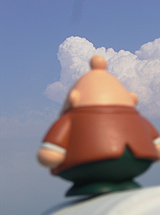
Koji Komurakata (proxy)

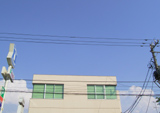
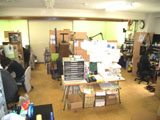
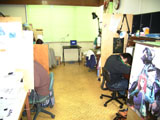
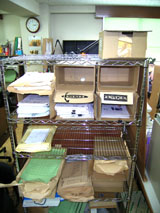
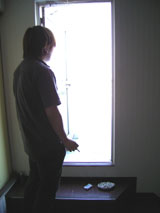




 terms of use
terms of use